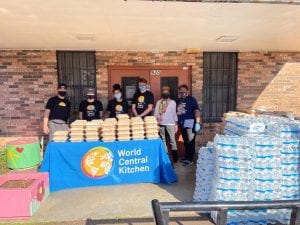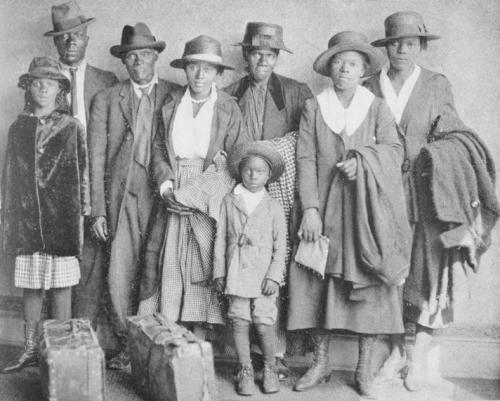
What Happened to the U.S. Manufacturing Industry?
March 6, 2021
The Impact of The Great Migration
March 18, 2021I went to bed hungry once.
I was in community college in San Diego living in a beach house with two other guys.
My roommates weren’t around on this Saturday night. I had no money and no car. As it got dark, I searched the cupboards and refrigerator and realized there was no food in the house. Zero.
So, I went to sleep early without having eaten.
Going to bed hungry is more than just having an empty stomach. There is a loneliness and sadness that accompany it.
The next morning, I rode my bicycle an hour to my parents’ house to get something to eat. That evening, my roommates had replenished the kitchen.
I vowed never to go to bed hungry again. In the half-century since then, I haven’t.
About one-eighth of the United States isn’t as fortunate.
The organization Feeding America estimates that 44 million Americans are “food insecure.” About 13 million of them are children. The groups say 49 million people in the United States use food programs at some point during the year.
The problem is not limited to one region.
Hunger can be found in urban, rural and suburban areas, although less populated areas tend to be hit a little harder. Feeding America reports that hunger is particularly acute in rural areas, where much of our nation’s food is grown. People in rural towns face additional obstacles such as transportation and a lack of services when they try to seek help.
People of color also tend to be more vulnerable.
African-American households are more likely than other households to experience poverty and hunger. One in five Latinos also struggle with hunger issues.
Food insecurity, however, doesn’t just strike low income households.
Feeding America estimates that two-thirds of people facing hunger issues have incomes above the poverty line.
A story in National Geographic Magazine reports that two-thirds of households with children who face food insecurity have at least one working adult.
The article, which is entitled “The New Face of Hunger,” talks about how hunger now is different than it was in the Great Depression. Many people facing this problem today have jobs and homes. Some are even a bit overweight due to unhealthy diets.
That’s why the federal government in 2006 replaced the word “hunger” with “food insecurity” in its literature.
For children, food insecurity can mean more than being hungry. Besides the health consequences of malnutrition, hunger can also affect school performance as well as create behavioral issues.
For adults, hunger can increase the risk of chronic diseases ranging from high blood pressure to heart disease to diabetes. The stress of not knowing from where your next meal will come can also lead to mental health problems.
Many families also live in “food deserts” where quality grocery items are not nearby. Even those who can get to a grocery store sometimes have to purchase cheaper, less nutritious food.
The rise in homelessness during the COVID-19 pandemic was also a factor. Evictions increased as people fell behind on rent. The number of homeless in the United States is now estimated at more than 500,000. Hunger is a common affliction of being homeless.
Even with a home, many families facing hunger don’t qualify for federal assistance, so they must rely on food banks and other services.

World Central Kitchen is one of the agencies helping fight hunger. Photos by World Center Kitchen/WCK.org
The irony is that 72 billion pounds of safe, edible food goes to waste in the United States every year. Between 25 and 40 percent of food grown, processed and transported here is not consumed.
This is where groups such as Feeding America step in.
The organization works with farmers, manufacturers and retailers to secure food before it is thrown out. They also seek out staples that are nutritious and high in protein. The group also hosts educational programs and outreach to help break the cycle of poverty and hunger.
The World Central Kitchen is another group that pitches in.
The organization, founded in 2010 by chef Jose Andres, has served more than 50 million fresh meals to people impacted by natural disasters around the world. The group has chef relief teams that are deployed to hard hit areas.
They were busy everywhere during the COVID-19 pandemic. They also jumped in when the February 2021 snowstorms knocked out power in Texas and other states.
Some structural solutions that have been suggested include consistent meal programs, mobile food markets and training people on how to grow their own fruits and vegetables.
In September 2022, the Biden administration announced a new plan to end hunger in America by 2030. The goal would be accomplished mostly by expanding monthly food benefits and encouraging healthy eating.
The bottom line is that until the hunger issue is solved, millions of children in the United States will go to bed tonight with that lonely and sad feeling that I felt many years ago.


